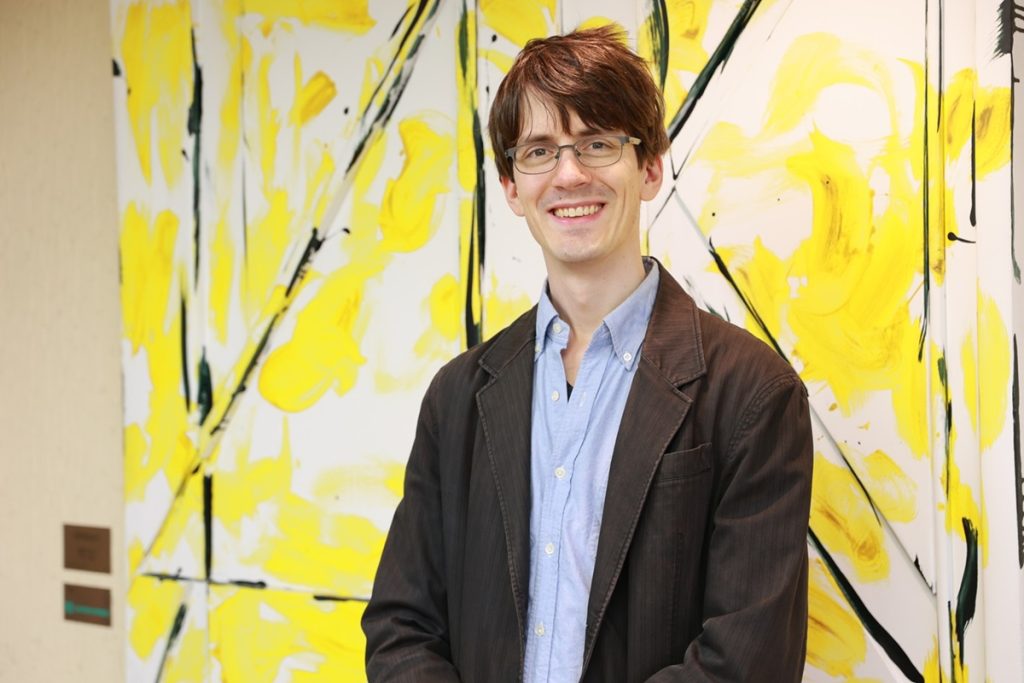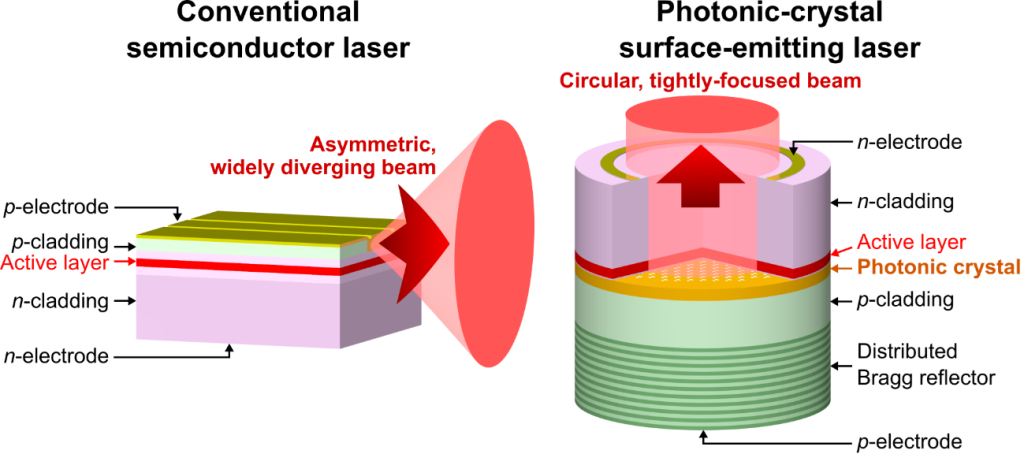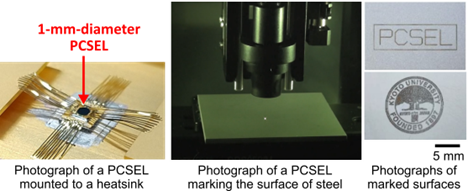Welcome to ILE! Interview with Asst Professor Gelleta on his arrival
Mr. John Gelleta has joined the Quadruple Matrix Center as an Assistant professor from Feb 2024.

What is your research topic?
I research photonic-crystal surface-emitting lasers (PCSELs), a novel type of semiconductor laser known for emitting high-power, tightly focused laser beams, and for enabling advanced functionalities that are challenging for conventional lasers. PCSELs also maintain attractive features of their semiconductor predecessors, such as compactness, efficiency, and affordability. My focus is on understanding basic principles governing PCSEL operation and on optimizing their performance. I am also exploring social and scientific applications, such as optical pumping of solid-state lasers with PCSELs to emit laser beams of even higher power.

Figure 1. Schematics of a conventional semiconductor laser (left) and a photonic-crystal surface-emitting laser, or PCSEL (right)
How and why have you chosen your research topic?
This might be unexpected after having explained my research topic, but my research interest originally lied in the field of computer engineering. As a child, I wondered about the physical components inside my home computer that enabled its sophisticated performance. Whatever these “building blocks” are, they must be far more advanced than the wooden ones I use to build toy houses, I thought.
In 2010, I enrolled in the graduate program of McMaster University in Canada, with the aim to develop photonic-integrated-circuit components for optical computers. Light-based computers offer advantages over conventional electrical ones, such as parallel and even quantum computing, but light is much more difficult to control. Under my advisor, Professor Andy Knights, we devised a method to “slow down” light using a silicon-based photonic crystal waveguide. This waveguide, resembling a slab of Swiss cheese, allowed us to delay the propagation of light by causing light to scatter back and forth, facilitating conversion of light into electricity for computational purposes.
From this experience, I was drawn to the laboratory of Professor Susumu Noda and his colleagues at Kyoto University, who specialize in practical applications of photonic crystals. Following my desire to understand the building blocks of complex systems, I joined the PCSEL development team, focusing on the development of a theory to describe and predict the performance of these lasers.
What are some of the results of your research?
Upon joining the PCSEL team, the basic principles of PCSEL theory were already established. The team had constructed theoretical models based on “coupled-lightwave equations” to link material properties of PCSELs to their lasing characteristics. However, these equations were solved numerically, which obscured the relationship between inputs and outputs. Consequently, designing and optimizing PCSELs for applications relied on trial and error, with no foreknowledge of theoretical limits.
To design and optimize PCSELs more effectively, an analytical solution to the coupled-lightwave equations was desired. By focusing on specific photonic crystal symmetries, I derived one such solution, identifying exotic properties like “exceptional points” at which light propagates in only one direction through the photonic crystal. (Imagine rocking yourself in the bathtub to make waves. If those waves are made at an exceptional point, then they would flow from one end of the bath to the other, but not the other way!) Leveraging this breakthrough, my colleagues and I developed a single-chip PCSEL capable of emitting a continuous-wave laser beam with an optical output power of fifty watts and a divergence angle of under 0.1°. Remarkably, this performance was achieved without using external optics such as lenses, which is important for miniaturizing the device and reducing the time and cost required for its assembly. This powerful, tightly focused beam of light, sufficient for marking and cutting stainless steel, had never been continuously emitted from an unadorned semiconductor laser.

Figure 2. Marking of stainless steel using a PCSEL
What do you find enjoyable about your research?
I feel fortunate for being able to participate in research that benefits other people. Hearing others express interest in applying PCSELs as light sources of even more complex systems helps me to realize that the time spent on PCSEL research is worthwhile. I hope that in the future, when children become interested in the building blocks of such systems, they will discover the PCSEL that I was involved in developing.
What do you find difficult or challenging about your research?
In software development, “modularity” is a key design technique in which a complex system is divided into parts, each performing a specific task hidden behind an interface, in order to simplify one’s understanding of the system. Modularity also promotes flexibility and efficiency, as these parts can be recycled when creating new systems.
I strive to apply this technique in my research, from theory derivation to simulation software development. As work progresses, it becomes challenging to track past efforts and errors. Thus, meticulous documentation and organization are crucial. Though such overhead incurs additional costs to my present self, dividends are paid to my future self, who can remember and recycle results without needlessly repeating errors.
Please share a message for younger students who aspire to become researchers.
To those considering a research career, I suggest aligning your research with your hobbies. Enduring hardship is easier when motivated by personal interests. For instance, learning a foreign language is less daunting when done in the service of hobbies like reading literature, watching television, playing games, or making friends. Similarly, conducting research in alignment with your hobbies helps you to persevere through the hard work and many failures lying between you and research outcomes, from the conception of new ideas to their social implementations.
